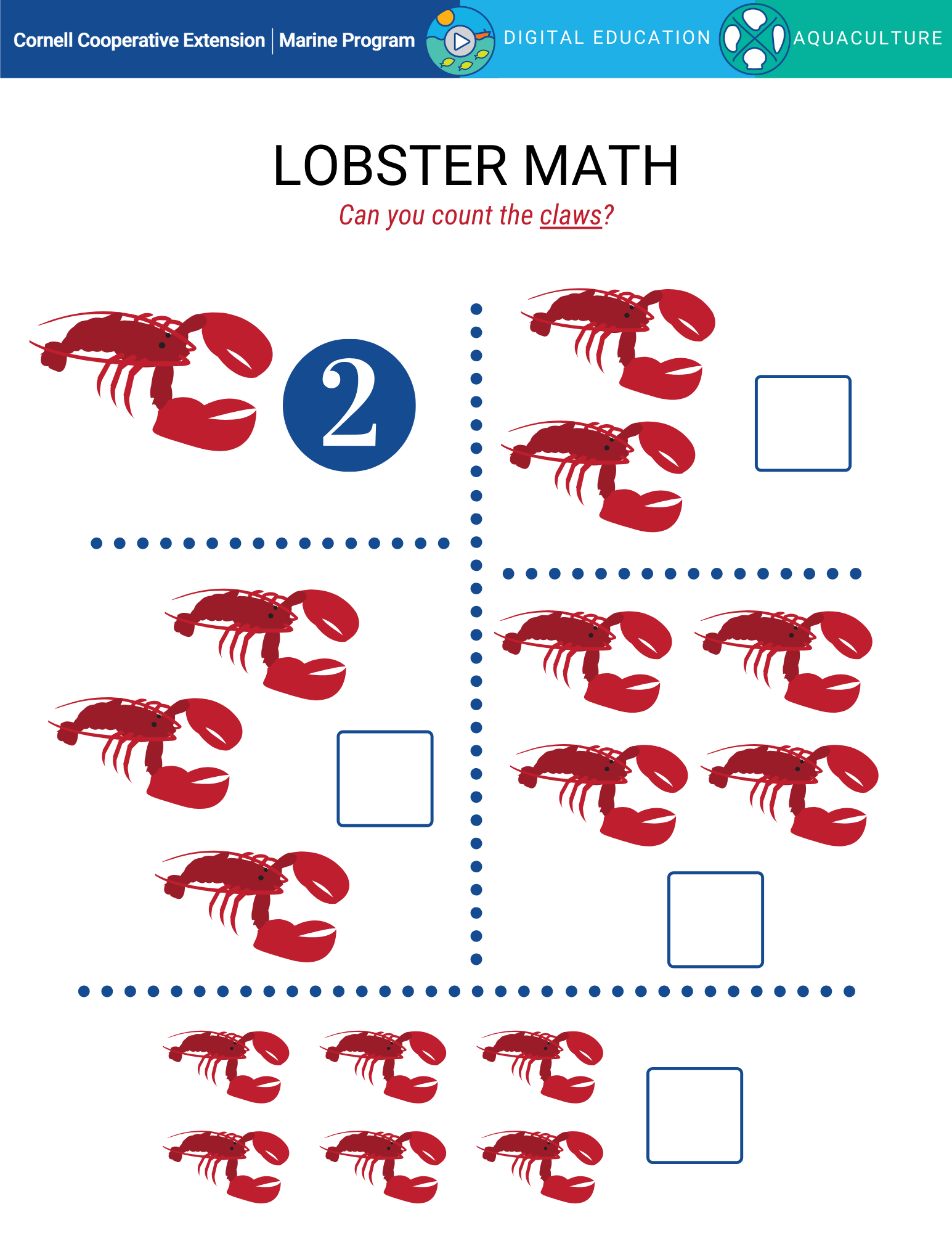The American Lobster Homarus americanus
The American Lobster, Homarus americanus, is a crustacean found in cool New England waters, and is known for being a favorite seafood item.
The lobster fishery, once a thriving industry in Long Island Sound, crashed in the late 1990’s.
The American lobster is a well-known seafood symbol for coastal communities from New England to Canada. Many people, when they think of a lobster, envision a boiled red lobster, served with melted butter, dripping from claw or tail meat. The meal is not complete without a large bib worn to enjoy this New England seafood delight.
Lobsters are crustaceans along with other familiar crabs such as spider crabs, blue claw, shrimp, hermit and fiddler crabs. Crustaceans have a hard exoskeleton, two compound eyes, three pair of antennae and three pairs of mouth parts.
Lobsters can be up to four feet long, weighing over 40 pounds. The lifespan of a lobster is estimated to be up to one hundred years. They have poor eyesight but a very good sense of smell and taste. Lobsters use their legs for walking on the ocean bottom, and if threatened can swim forward or backward by thrusting their strong tail. They use their crushing claw to break clam shells and other shellfish for food. A lobster’s teeth are in their stomach.
The harvesting of lobsters as a food source has a long history. In colonial times, lobsters were fed to pigs and goats and only eaten by the poor. Lobster was considered the “poor man’s chicken”. Lobster boats harvest lobsters with baited traps tied to line with a buoy on the surface. Locally, Long Island Sound was considered a favorable lobster harvesting area until a massive die off decimated the fishery in the fall of 1999.
Today, CCE has been working to remove old lobster traps that act as ghost traps, trapping and killing lobsters and other marine life. In 2010, CCE marine program fisheries team started removing derelict and abandoned lobster traps. Data showed that 20% of traps had lobsters in them and 4% of the lobsters were dead. To date, a total of 16,610 derelict lobster traps have been removed. The traps were returned to owners or recycled.
For more information on the lobster trap removal program go to: http://ccesuffolk.org/marine/fisheries/derelict-lobster-trap-removal-projects
Lobster Videos
Marine Minute Monday- Derelict Lobster Trap Removal in Long Island Sound
Lobster Activities + Family Resources
American Lobster- Fast Facts
Learn some fast facts about the American Lobster, then test your new knowledge with our crossword puzzle!
American Lobster- Crossword Puzzle
After reading about the American Lobster, test your knowledge with this crossword puzzle.
Lobster- Color + Match
Try our Early Education Color + Matching activity with your Pre-K or Kindergartner!
Lobster Scavenger Hunt
Try our Early Education scavenger hunt activity about Lobsters that can be done inside your home! Recommended for Grades K-2
Lobster Coloring Sheet #1
Print your own lobster coloring page! Get creative with this coloring sheet- lobsters can range in colors from blacks, browns, reds oranges and blues!
Lobster Coloring Sheet #2
Print this coloring sheet featuring a lobster in it’s rocky shoreline habitat.
Student and Teacher Resources
Early Ed- Math and Pattern Activity
Try this early education activity where your child counts lobster claws and can cut-and-paste to find the pattern! K-2
The Lobster Game- Learning Resource
Challenge your science student with this interactive way to learn about fisheries management! Print the board and use game pieces you have at home!
Lobster Population Decline- High School Science Activity
Have your high school science student explore what happened to lobster populations in Long Island Sound.
Art Projects
How to Draw a Lobster
How to draw a Lobster with our Art + Science Instructor Carolyn Munaco. All you need is some paper and a pencil and you will be guided through the process of...
How to Draw a Lobster
Detailed instructions on how to draw your very own Lobster!
How to Make a Clay Lobster
Homemade Clay Lobster
Instructions on how to sculpt a lobster out of clay!














